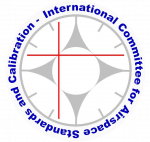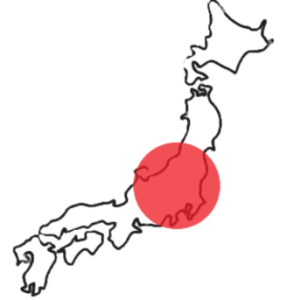South Africa
Between the Wright Brother’s first flight in 1903 and the first walk on the moon, only 63 years have elapsed. We have since sent unmanned missions to Mars and built a space station. All these achievements are closely linked to man’s ability to navigate in the airspace available to him.
The safety of pilots and passengers have not been left behind in this rapid process of change.
Constant research and upgrading of navigational aids with built in safety features and constant checking facilities, have kept the skies safer than most roads.
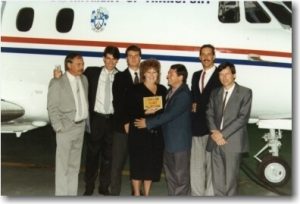 Part of these aviation safety features are the efforts of the people working in a section called Flight Inspection. This is a worldwide organisation that can be found in almost every country that has regular air traffic. South Africa not being the exception…
Part of these aviation safety features are the efforts of the people working in a section called Flight Inspection. This is a worldwide organisation that can be found in almost every country that has regular air traffic. South Africa not being the exception…
The safety in South African skies was first regulated in 1947, when the Directorate of Civil Aviation came into existence. In 1949 the first temporary ILS (Instrument Landing System), was installed at Palmietfontein, followed in 1953 by a similar installation at Wingfield Air Base. Flight Inspection in those days was done in a Lockeed Lodestar, belonging to South African Airways. During 1953 and 1954, the two ILS systems were moved to new locations, commonly known today as ” Johannesburg International airport” and “Cape Town International”.
The Department of Transport then purchased its first aircraft, a multi-purpose De Havilland Rapide, which also played a role in flight calibration.
The first dedicated aircraft for flight inspection was a De Havilland “DOVE” purchased in 1953.
In 1957 a Douglas DC3 was purchased for the astonishing amount of ONE Pound from the South African Air force where it was used for VIP transport. A “in-house” system was developed and installed by the Department’s flight inspectors to serve their purpose, and this system was used up to 1992 with minor upgrades in between. It was refurbished with a somewhat newer “in-house” system.
As history writes itself, we come across a few incidences that lighten up a flight inspectors life. One of them being the incident, were two already elderly Dakota pilots flew a flight inspection mission and discovered one of the engines was giving off excess smoke. On closer inspection (by opening the side window to see better, the pilot, being elderly and needing reading glasses) found the cause of the smoke only to be excess oil on the engine. However, in the process of looking out the window his spectacles decided to take flight themselves, leaving behind two pilots, that passed reading glasses around the cockpit in order to land safely at home base. This incident had the result of nicknaming one of the pilots “I can see clearly now”.
New HS-125 Equipment (1971)
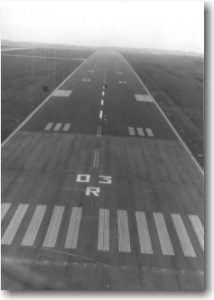 New Runway FA
New Runway FA
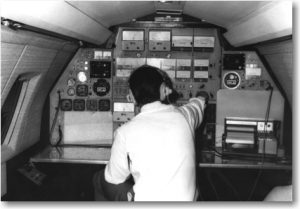 New HS-125 Equipment (1971)
New HS-125 Equipment (1971)
In 1971 an HS-125 was purchased fitted with a state of the art flight inspection system complete with Telectroscope. As these were the pre-sanction years, Africa started to open up for flight inspection and countries like Seychelles, Malawi, Rhodesia, etc where serviced by South Africa.
Going into the dark Ages of sanctions and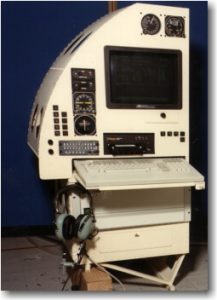 Apartheid also took its toll on flight inspection and they found themselves suddenly isolated from the rest of the world, only serving within South Africa.
Apartheid also took its toll on flight inspection and they found themselves suddenly isolated from the rest of the world, only serving within South Africa.
A new CITATION II was purchased which was to be equipped with state of the art Canadian equipment. As fate would have it, the project ended in misfortune and the CITATION II served mainly for VIP transport till 1990. It was then decided to try and salvage what remained of the abandoned project, and a semi- automatic system was developed in conjunction with a local research and development company. All three systems are still in use to date, depending on the mission and the serviceability of the aircraft.
South African flight inspection has moved from 2 Inspectors serving two airports, to 5 Inspectors serving the greater part of the SADC region and servicing 46 ILS’s, 107 VOR’s, 13 TACAN’s, and various other Navigational Aids.
With recent developments as to commercialization of the South African Civil Aviation Authority, Flight Inspection will become an increasingly more important tool to serve the entire SADC region and perhaps beyond. The purchasing of new Satellite referenced equipment is imminent and the hole organization will be streamlined and moulded into a commercial unit, serving the needs of customers all over Africa.
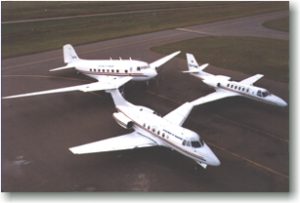 As technology rapidly advances, so will the specific tasks of the flight inspector change, but essentially, it is good to know, that the skies will always be watched over, for the safety of everyone concerned.
As technology rapidly advances, so will the specific tasks of the flight inspector change, but essentially, it is good to know, that the skies will always be watched over, for the safety of everyone concerned.
– by Patrik Thumiger
South African Civil Aviation Authority
